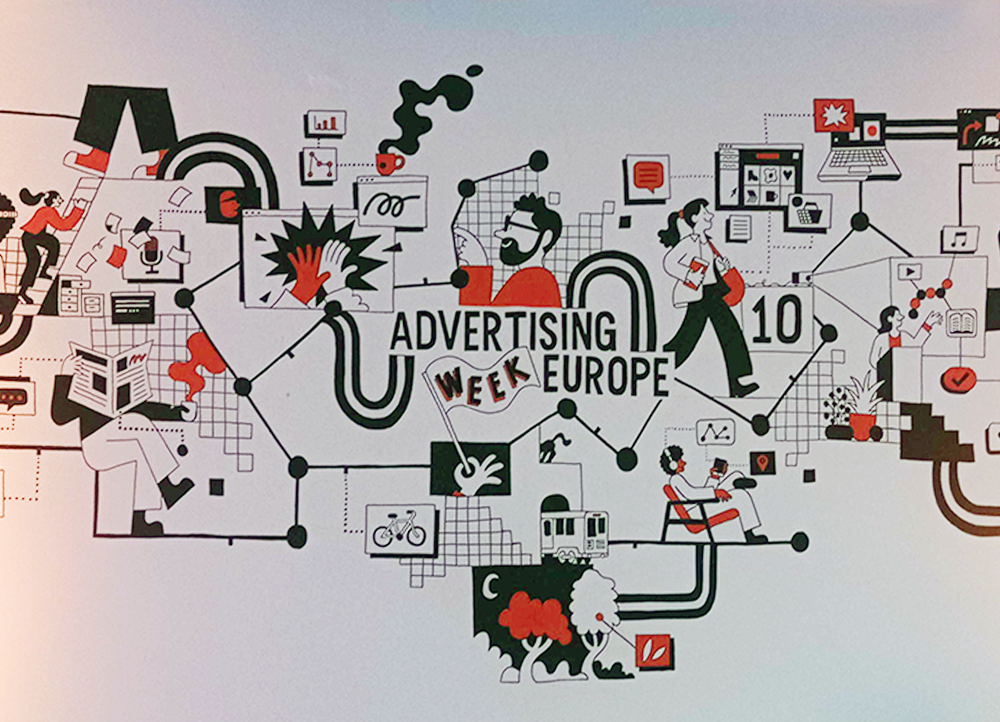Is ‘metaverse-marketing’ the next must-have on advertiser’s annual plans?
It’s certainly going that way. But we’re in the midst of turbulent times, and at Always Be Content headquarters we’re keeping a close eye on the opportunities, watching it unfold with cautious excitement.
We’ve seen the likes of Nike sell sneakers or ‘cryptokicks’ on the blockchain for upwards of $186K that nobody can actually wear. And this month, they’ve announced the arrival of their own metaverse platform, .Swoosh, where the Nike community will be able to buy, sell, trade and co-create new digital merchandise for a percentage of royalties. They’ve gone all in.
In the same month we’ve also seen the darker side of this fledgling market come to the fore. The collapse of the NFT market and the FTX Exchange – once the darling ‘safe’ crypto alternative – goes to the heart of the virtual dichotomy: to what extent is there intrinsic value in these new ‘innovative’ products, or is it all a speculative game?
Further, tech stocks are down across the board. And Zuckerberg is facing intense scrutiny over his ‘all-in’ approach to metaverse and VR projects (Reality Labs), which – along with broader macroeconomic trends, including sluggish demand from advertisers – has led to Meta laying off over 11,000 employees.
But the question of whether the metaverse is truly the future of social connection, and the conflation of the various facets of the market with crypto’s volatility are by-the-by. Ultimately, there are opportunities for advertisers to test the waters and begin to leverage the metaverse without needing a bespoke Web3 solution.
So, from leading brands like Nike to smaller brands dipping a toe, what’s the merit of your involvement? And how do you go about it?
Let’s start with ‘why’.
In simple terms – advertisers involved in metaverse marketing today are doing so for two reasons: reach and relevance. It is estimated that there are over 470 million people who use the metaverse platforms monthly, and research from Gartner predicts that within four years, 25% of people will spend at least one hour per day in the metaverse. That’s a huge amount of potential attention time that brands can harness. While many brands might not choose to be early adopters, as it becomes more ‘mainstream’ there may come a point where you’re either involved, or you’re irrelevant to your audience. Not dissimilar to social media’s role in modern advertising – an ad-funded metaverse is here to stay, and brands will come to consider this a core part of their marketing plans.
Considering audience reach in 2022, the metaverse is fairly dominated by gaming audiences.
There are 2.95 billion gamers worldwide making the gaming industry the biggest part of the metaverse thus far. A huge proportion of marketing investment decisions actually come down to reach. Digiday articulate it perfectly, noting that if you’re targeting the likes of Fortnite or Roblox with your ads, you’re realistically hitting a fifth of living humans. That’s money worth spending for many brands.
So what do metaverse gaming integrations look like today in 2022?
There’s a wide-ranging, veritable buffet of virtual branding options available to tuck into. On the a la carte menu – expect brand integrations/game integrations/ecommerce, and live experiences.
Let’s take the upcoming FIFA World Cup, for example, which embodies all of the above. FIFA have begun a multi-year partnership with Upland, a mirror-metaverse that replicates real world locations, which will launch with the World Cup village in Upland’s Qatar to celebrate the World Cup 2022. Player integrations will range from buying a $5 ‘flight’ to Qatar, visiting a digital version of the stadium and entering nearby shops in the FIFA World Cup-branded village to buy digital merchandise such as scarves and flags, which they can later use to adorn their virtual houses to express team spirit.
There are endless examples of leading brand activations that showcase the future marketing potential of the metaverse. But at Always Be Content our starting point for brands must always come down to the all-important question of ‘why’.
Defining metaverse marketing objectives:
What key business objectives can your brand solve by taking a more drastic approach to marketing focused digital transformation?
How much of your audience actually spend time in the metaverse—and for how long?
Once these questions are ironed out, it’s worth thinking about what the desired outcome is. From a measurement perspective, engagement is the only metaverse KPI worth thinking about yet as the wider ecosystem is still in its infancy. This means brand building is the key use-case of metaverse marketing. It’s only a matter of time before other metrics catch up and e-commerce metaverse storefronts become the norm, but if your business challenge today is D2C ecommerce or lead generation – best stick to what you know for now.
Identify the right metaverse experiences (and channels):
If gaming is the desired environment or audience, then branding integrations are pretty limitless. Light investment options might include owning the in-game media inventory in the metaverse (think brands on virtual billboards within game-play, or virtual stores featured on a high street). Clothing retailers are leveraging branded ‘skins’, sneakers, and hats for avatars. And at the more immersive end of the spectrum, brands are investing in branded game takeovers – like Gucci and Roblox’s virtual garden, for example.
While gaming still has the lion’s share of eyeballs in the metaverse, there are several other activations already available to brands in the metaverse.
Gaming aside, new non-gaming metaverses are starting to appear more and more frequently. In particular, there are many opportunities within the corporate space to invest in metaverse marketing. Conferences and virtual events have been in existence for a few years, especially with the impact of global lockdowns considered. But beyond these, there is clearly space for virtual courses/networking/consultations where brands can host or participate in activations and test out metaverse potential for brand engagement even at a corporate level before becoming an outreach lever.
There are also metaverses for the likes of crypto/NFTs and other social experiences. For example, metaverse auctions with NFTs use cryptocurrencies as payments, such as Sotheby’s NFT trading platform. Live events are also on the rise. Fortnite have been at the forefront of metaverse concerts that integrate with the gaming world natively, such as their Ariana Grande concert – which demonstrates the leap from virtual concerts to totally unique experiences that are fit only for the game in which they present.
What’s next
It’s clear that the tech industry as a whole is facing challenging times. With layoffs across most tech giants, the impact of downward macroeconomic trends is huge on platform development. But the reality of harder economic times also means brands need increasingly creative methods to grow share of voice, and share of market. And the intrinsic value of marketing in the metaverse is in the creation of meaningful experiences for consumers that by proxy grow your brand. So while tech teams are reorganizing, knowledgeable creative teams must get to work.
With some creativity and specialist support, the opportunities for brands to build awareness and engagement in the metaverse (regardless of size and investment potential) are limitless. But doing so natively in a way that integrates brand with environment is critical. Consumer behaviour will continue to change now it has been exposed to play/work/shop/learn in a reality-meets-virtual environment, meaning brands will continue to have new ad inventory opportunities to harness.
So it’s likely that the metaverse will continue to grow in prominence and importance for marketers in the near future. But to set up for success, advertisers should focus efforts on brand building and engagement to sustain growth, maintaining distance from the volatility of the speculative crypto market while it stabilizes, or indeed dissipates.
To learn how Always Be Content can support your brand navigate metaverse opportunities efficiently, get in touch.
Share and tag us @alwaysbecontent








